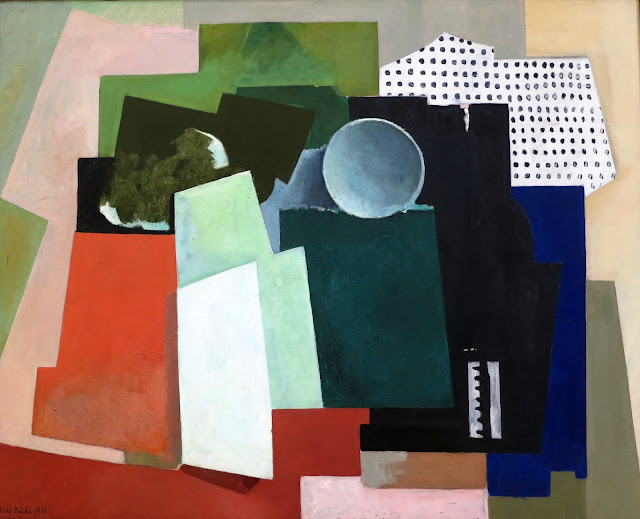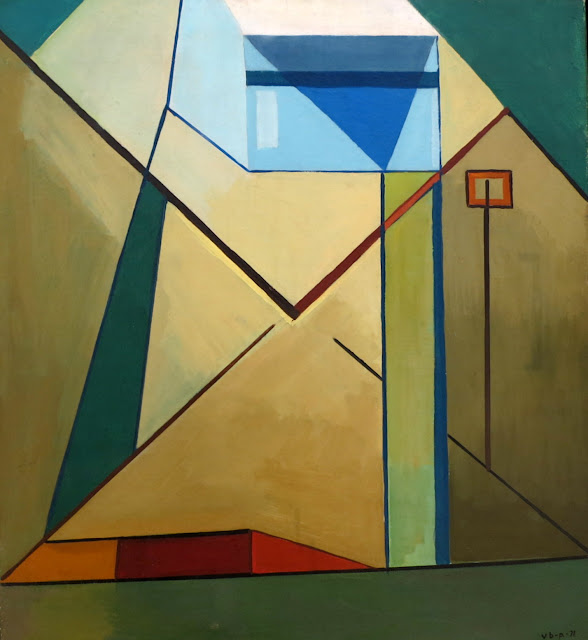Visiting the Staaten Museum for Kunst in Copenhagen was a real pleasure - so many paintings that I was not familiar with, so many artists I had not come across before! I learnt so much about Danish art and there is so much I want to pursue further.
The Green Quadrangle, Richard Mortensen, 1933
Alternate Eroticism, Vilhelm Bjerke Petersen, 1933
Phantoms, Rita Kernn-Larsen, 1934
The Overturned Drawer, Rita Kernn-Larsen, 1931-32
Two Sexless Figures, Chimera, Max Ernst, 1933
The two interlocking bird-like creatures form a circle shape, a symbol of the unity of woman and man - of a complete human being. The erotic, including the hermaphroditic or the androgenous, occupied a prominent position in the Surrealists' imagery and thought. The bird motif also held personal significance for Marx Ernst and was used in stagings of his alter ego, the 'Loplop' figure.
Self Portrait, Full Length, Walking, Kurt Trampedach, 1970
Women Forward, Ursula Reuter Christiansen, 1971
Composition in Blue and Green, Else Alfelt, 1949
Else Alfelt
Stormy Sea, Jens Sendergaard, 1954
The vastness of nature and the insignificance of human beings is the theme of this painting based on the coastline in Western Jutland.
The Sea at Sunset, Jens Sendergaard, 1956
Landscape in Schleswig, Erich Heckel, 1930
View of Esnum Lake, Gabriele Munter, 1918
Composition 2, Olaf Rude, 1918
Circle and Quadrangle, Franciska Clausen, 1930
The title 'Circle et Carre' not only describes the elements of the painting, it is also the name of the international artists' association and a journal formed in Paris in 1930 as a Constructivist counterpoint to Surrealism. Clausen was associated with the group which included Piet Mondrian.
The Bar, Franciska Clausen, 1927
Blue Space, Richard Mortensen, 1932-33
Untitled, Vilhelm Bjerke Petersen, 1931
Two Women, Harald Giersing, 1922
Woman, Reading, Harald Gersing, 1922
Boys Watching a Toad, William Scharff, 1941
Boy Taking a Header, Jens Ferdinand Willumsen, 1909
Boys Bathing, Peter Hansen, 1902.

























No comments:
Post a Comment